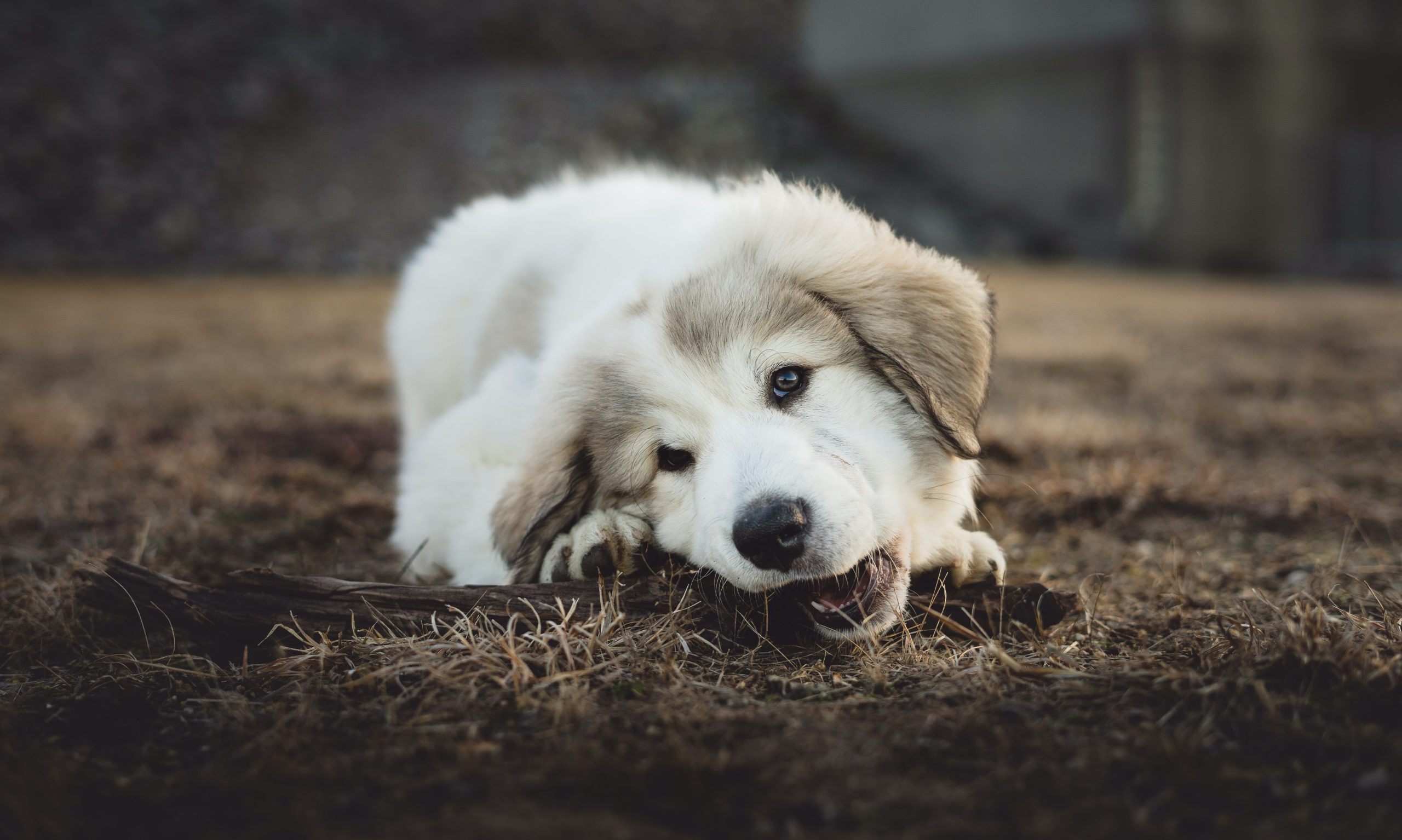5 Tips for Teaching Your Dog Not to Chew
1. Provide Appropriate Chew Toys: Make sure to provide your dog with plenty of appropriate chew toys. This will help to redirect their chewing away from items that are not meant to be chewed.
2. Supervise Your Dog: When you are not able to supervise your dog, make sure to keep them in a safe, secure area. This will help to prevent them from getting into items that they should not be chewing on.
3. Use Positive Reinforcement: Whenever your dog chews on an appropriate item, make sure to reward them with praise and treats. This will help to reinforce the desired behavior.
4. Discourage Chewing: Whenever your dog begins to chew on an inappropriate item, make sure to discourage them with a firm “No” and remove the item from their reach.
5. Exercise Your Dog: Make sure to provide your dog with plenty of exercise and mental stimulation. This will help to keep them from getting bored and looking for things to chew on.

How to Discourage Chewing in Puppies
If you’ve recently welcomed a puppy into your home, you’ve probably already noticed that they love to chew on anything and everything. Chewing is a natural behavior for puppies, but it can be destructive and dangerous if not managed properly. Here are some tips to help you discourage chewing in your puppy.
1. Provide Appropriate Chew Toys: Make sure your puppy has plenty of appropriate chew toys to keep them occupied. Choose toys that are specifically designed for puppies and made from durable materials. Rotate the toys regularly to keep your puppy interested.
2. Supervise Your Puppy: Whenever your puppy is unsupervised, make sure they are in a safe, puppy-proofed area. This will help prevent them from getting into things they shouldn’t be chewing on.
3. Redirect Chewing: If you catch your puppy chewing on something they shouldn’t, redirect them to an appropriate chew toy. Praise them when they start chewing on the toy instead.
4. Discourage Chewing: If your puppy continues to chew on something they shouldn’t, make a loud noise to startle them and then redirect them to an appropriate chew toy.
5. Provide Exercise: Make sure your puppy is getting plenty of exercise and mental stimulation. This will help keep them from getting bored and looking for things to chew on.
By following these tips, you can help discourage chewing in your puppy and keep them safe. Remember, it’s important to be consistent and patient when training your puppy. With time and patience, you can help your puppy learn what is and isn’t acceptable to chew on.
The Benefits of Providing Appropriate Chew Toys for Your Dog
Chew toys are an essential part of any dog’s life. Not only do they provide hours of entertainment, but they also help keep your pup’s teeth and gums healthy. Providing your pup with appropriate chew toys can also help prevent destructive chewing and other behavioral issues. Here are some of the benefits of providing your pup with appropriate chew toys.
1. Keeps Teeth and Gums Healthy: Chew toys help keep your pup’s teeth and gums healthy by removing plaque and tartar buildup. This helps prevent gum disease and other dental issues.
2. Prevents Destructive Chewing: Chew toys provide an appropriate outlet for your pup’s natural urge to chew. This helps prevent them from chewing on furniture, shoes, and other items that you don’t want them to chew on.
3. Reduces Stress and Anxiety: Chew toys can help reduce stress and anxiety in your pup. Chewing is a natural behavior that helps them relax and feel secure.
4. Provides Mental Stimulation: Chew toys can provide mental stimulation for your pup. This helps keep them mentally engaged and can help prevent boredom.
Providing your pup with appropriate chew toys is an important part of their overall health and wellbeing. Not only do they help keep their teeth and gums healthy, but they also help prevent destructive chewing and provide mental stimulation. So, make sure to provide your pup with appropriate chew toys to keep them happy and healthy.
How to Stop Your Dog From Chewing on Furniture
Are you tired of your dog chewing on your furniture? If so, you’re not alone. Chewing on furniture is a common problem for many pet owners. Fortunately, there are a few steps you can take to stop your dog from chewing on furniture.
1. Provide Appropriate Chew Toys
The first step in stopping your dog from chewing on furniture is to provide them with appropriate chew toys. Make sure the toys are made from durable materials that can withstand your dog’s chewing. You should also rotate the toys regularly to keep your dog interested.
2. Discourage Chewing
When you catch your dog chewing on furniture, it’s important to discourage the behavior. You can do this by making a loud noise or saying “no” in a firm voice. You should also remove the furniture from your dog’s reach.
3. Exercise Your Dog
Exercise is an important part of keeping your dog healthy and happy. Make sure your dog gets plenty of exercise each day. This will help reduce their energy levels and make them less likely to chew on furniture.
4. Use Bitter Apple Spray
Bitter apple spray is a great way to discourage your dog from chewing on furniture. Simply spray the furniture with the bitter apple spray and your dog will be less likely to chew on it.
5. Seek Professional Help
If you’ve tried all of the above steps and your dog is still chewing on furniture, it may be time to seek professional help. A certified dog trainer or behaviorist can help you identify the underlying cause of the behavior and develop a plan to stop it.
By following these steps, you can help stop your dog from chewing on furniture. Remember, it’s important to be patient and consistent when training your dog. With a little time and effort, you can help your dog learn to stop chewing on furniture.<h2 id=”wpaicg-the-dangers-of-chewing-on-non-food-items-and-how-to-avoid-them”>The Dangers of Chewing on Non-Food Items and How to Avoid Them</h2>Chewing on non-food items is a surprisingly common habit, but it can be dangerous. From pencils to fingernails, many people find themselves chewing on items that can cause serious damage to their teeth and gums. Here’s what you need to know about the dangers of chewing on non-food items and how to avoid them.
The Dangers of Chewing on Non-Food Items
Chewing on non-food items can cause a variety of dental problems. Chewing on hard objects can chip or crack your teeth, leading to pain and expensive dental bills. Chewing on sharp objects can also cause cuts and scrapes in your mouth, which can lead to infection. In addition, chewing on non-food items can cause jaw pain and headaches.
How to Avoid Chewing on Non-Food Items
The best way to avoid the dangers of chewing on non-food items is to find healthier alternatives. If you’re a nail biter, try wearing gloves or using a bitter-tasting nail polish to discourage the habit. If you’re a pencil chewer, try using a stress ball or a fidget spinner instead. If you’re a gum chewer, try sugar-free gum or mints.
In addition to finding healthier alternatives, it’s important to be aware of your triggers. If you find yourself chewing on non-food items when you’re stressed or bored, try to find healthier ways to cope with those feelings. Take a walk, listen to music, or talk to a friend.
Chewing on non-food items can be dangerous, but it’s possible to break the habit. By finding healthier alternatives and being aware of your triggers, you can avoid the dangers of chewing on non-food items.


0 Comments